
Svein K Aasen
CEO
Patentec AS
NORWAY
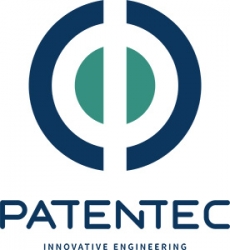
Synopsis: The technology is based on a complete redesign of the very core of today’s engines and provides a compact, extremely low-weight (30-50% lower) and powerful ICE. It is scalable and applicable in most ICE designs, compact and vibration free. The first prototype is built and running. A unique redesign of the crankshaft has made it possible to realize technical principles that until now have not been technically and commercially viable. The Hilberg Engine is a new tool to improve fuel efficiency and reduce emissions.
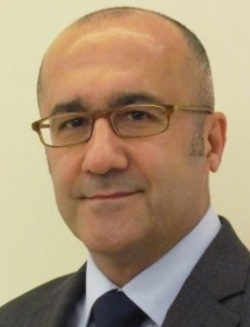
Frank Abkenar
director - global engine engineering
Ford
USA

Synopsis: The internal combustion engine has dominated the road transportation sector for the last century. This highly successful thermal machine has been heavily criticized recently. Based on the fundamental laws of thermodynamics, the undiminished increase of the total engine efficiency is limited. This moves 'what to burn' instead of 'how to burn' into the center of interest. A very promising alternative to classic fuels based on fossil sources is the use of sustainable fuels produced on the basis of renewable energy. The majority of the next-generation propulsion systems will continue to have an internal combustion engine as an integral part of an electrified system to ensure the best compromise regarding performance, operating range, cleanliness and cost. Therefore, the ongoing optimization of the internal combustion engine is essential for the future of automotive propulsion systems.

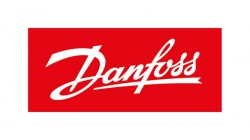

Daniel Abrahams
senior research and development engineer
Artemis Intelligent Power
UK

Synopsis: Digital displacement pump-motors represent a step-change in the advantages of hydraulic machinery; they are extremely efficient, have high bandwidth control and eliminate the high-frequency noise typical of conventional machines. The technology has been demonstrated as a low-cost alternative to electrics in vehicle transmissions and brake energy recovery systems, on prototype vehicles including a passenger car, truck, bus and train. The technology can also be used to create an engine-hybrid package, allowing engine downsizing, with short-duration peak loads supplied by the pump-motor. This talk will present real-life fuel measurements, comparison with simulation and discussion of the advantages.
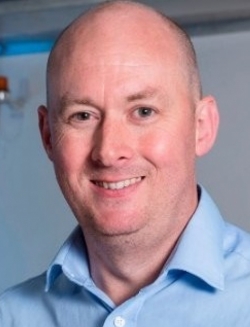


Sam Akehurst
professor
IAAPS - Institute for Advanced Automotive Propulsion Systems & University of Bath
UK

Synopsis: Even the most optimistic projection for BEV and PHEV uptake has 57% market penetration by 2040, based on annual sales. Of that, ~15% will be PHEV fitted with an internal combustion engine, meaning that the majority of vehicles sold in 2040 will still feature an internal combustion engine. Therefore it is essential that we continue to consider all opportunities to minimize IC engine emissions and pathways to reducing the CO2 footprint of future vehicles. This presentation will give an overview of potential pathways to net-zero CO2 and near-zero emissions at the tailpipe, including novel engine topologies, advanced combustion concepts, future fuels and complete powertrain energy management. Synergies between electrification and IC engine optimization will be highlighted as potential pathways to significantly increase IC engine efficiency.

Sam Barros
director of engineering
Nostrum Energy
USA

Synopsis: This session will present laboratory research and in-vehicle test data from various water injection strategies that Nostrum Energy has researched as a solution to thermally manage high engine outputs in a future where RDE testing means no longer being able to rely on over-fueling for high-load operation.

Mike Bassett
chief engineer
Mahle Powertrain Limited
UK
Synopsis: The pre-chamber-based jet ignition concept produces jets of partially combusted species that induce ignition in the main combustion chamber, enabling rapid, stable combustion. The potential passive jet ignition, combined with high compression ratio, Miller cycle and EGR to provide high-efficiency engine operation, has been presented previously. This study demonstrates the capability of the passive pre-chamber to enable whole map λ=1 operation and both idle stability and catalyst light-off capability, comparable to a conventional spark plug. Data showing the engine-out emissions and compatibility with conventional aftertreatment systems, along with practical considerations for use in vehicle applications, are also discussed.
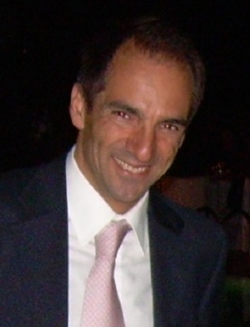
Carlo Beatrice
senior scientist
Istituto Motori CNR
ITALY
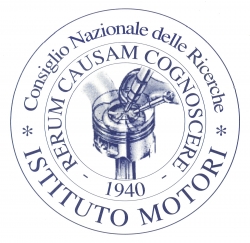
Synopsis: The presentation will provide a technical review of the most powerful advanced technologies (ready or under development) able to make the gas engine competitive with alternative propulsion systems in terms of GHG emissions in the lifecycle.
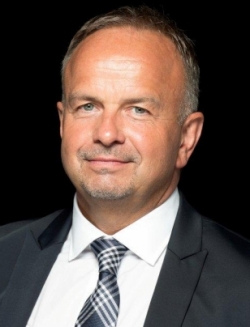
Stefan Bill
managing director
Rewitec GmbH
GERMANY

Synopsis: Rewitec is part of the chemical company Croda and has developed an innovative silicon-based nano- and microparticle surface treatment technology. The active particles use lubricants as a carrier and through adsorption build a protective and repairing silicon-based coating in engines, gears and differentials. The lecture presents scientific tribological tests performed by the universities of Giessen and Mannheim with different common engine and gear oils in combination with the additive. On test benches, a significant reduction in friction, wear and temperature is observed. All in all, these effects provide a longer lifetime and higher efficiency of engines and gears.



Thorsten Boger
commercial technology director – global light duty
Corning - Environmental Technologies Division
GERMANY

Synopsis: This presentation covers an investigation done by Corning and Lubrizol focused on GPF and lubricant technology effects on ultrafine particulate emissions. Testing was performed using a mid-size TGDI vehicle tested over the appropriate WLTP cycle at a certified test laboratory in Germany. Engine-out and tailpipe emissions were measured, including particulate emissions by condensation particle counter and Cambustion DMS 500 instruments. Three types of filter were used, including a prototype next-generation unit. Two oils were tested, one with low ash and volatility, one with high ash and volatility. The effects on particulates down to 5nm were investigated.

Wissam Bou Nader
research and development engineer - advanced research and innovation projects
Groupe PSA
FRANCE

Synopsis: Waste heat recovery (WHR) systems constitute a promising solution for reducing vehicle fuel consumption in order to meet the CO2 regulation targets by 2025. Overall efficiency optimization of a combined cycle machine consisting of a reciprocating internal combustion engine (ICE) and a bottoming WHR system for a range-extended electric vehicle (REEV) is studied. To clearly present our studies, this presentation is divided into two parts. In Part A, a methodology is proposed to improve the overall operational efficiency for such a combined-cycle machine. In Part B, the application's different systems are integrated in REEV.
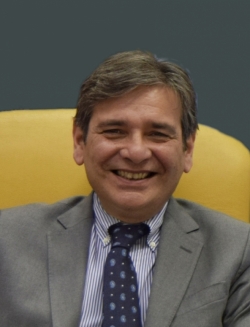
Fabio Bozza
professor
Università di Napoli Federico II
ITALY

Synopsis: Highly efficient spark-ignition engines suitable for a sustainable mobility scenario mainly exploit the concept of diluted combustion, achievable through either flame propagation, compression ignition or a combination of both. The presentation focuses on active pre-chamber ignition systems, able to sustain stable flame propagation in ultra-lean conditions (lambda>2). Experimental results and simulation analyses obtained as part of the EAGLE (Efficient Additivated Gasoline Lean Engine) H2020 project are summarized, demonstrating the feasibility of a peak efficiency close to 50%. The EAGLE engine, integrated in a plug-in hybrid powertrain, complies with Euro 6 emission limits, producing 50g CO2/km over the WLTC.

Tom Cardy
business development manager
Emissions Analytics
UK

Synopsis: Innovative value: Historically, the focus has been primarily on emissions compliance at original certification. Due to the combination of Dieselgate and the new in-service surveillance testing under Real Driving Emissions, the notion of emissions compliance risk is much broader, and strict compliance may still come with reputational risk. Emissions Analytics’ presentation sets out the challenges and potential solutions. The data that we will present is based on our independent test program: the EQUA Index is the largest database of its kind and therefore our perspective is unique.

Nick Carpenter
engineering director
Delta Motorsport
UK

Synopsis: Starting from a clean sheet of paper, Delta has developed a lightweight and compact 35kW generator that is ideally suited to use as a range extender for passenger cars and small commercial vehicles. The presentation will describe Delta’s perspective on the role that range-extended EVs can play in dramatically reducing CO2 and other emissions while also offering OEMs a vehicle architecture that is more attractive (to them and their customers) than BEV. The presentation will also provide an overview of the catalytic generator, explaining why it is such a good fit for this purpose.

Alessandro Cavani
combustion systems and components product manager
Marelli
ITALY

Synopsis: The path toward Euro 7 and stricter CO2 legislation requires automotive manufacturers to find new solutions to achieve higher efficiencies and lower emissions from the internal combustion engine. High compression ratio and unconventional combustion systems are key areas of focus. Very-high-pressure direct injection is a candidate technology to enable high efficiency and clean combustions, overcoming standard GDI drawbacks such as knocking and soot. Marelli has developed a complete very-high-pressure GDI fuel system capable up to 1,000 bar. This session will outline the main development challenges and key features of very-high-pressure GDI fuel systems with a focus on injector, pump and corresponding control strategies.

Graham Conway
principal engineer
Southwest Research Institute
USA

Synopsis: This presentation discusses some of the challenges of battery electric vehicles today and why they should not be called ‘zero emissions’. The talk also discusses how scaling batteries for larger applications such as trucks, ships and planes has many challenges. There will also be discussion of the flaws in industry measurements of CO2, and why lifecycle analysis is critical. Finally, the presentation will examine the role that electrification can have in unlocking further potential in the ICE. The summary is that the ICE will be around for a long time – it will adapt, evolve and survive.

Enrico Corti
founder
Alma Automotive Srl
ITALY
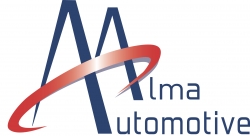
Synopsis: The use of piezoelectric cylinder pressure sensors is common during engine testing, but cylinder pressure information is also becoming mandatory in several onboard applications, where low-temperature combustion (LTC) approaches require feedback control of combustion, due to poor combustion stability and the risk of knock or misfire. The use of cylinder pressure signals would simplify the implementation and calibration of control and diagnostic strategies, such as knock and misfire detection. However, costs are often not compatible with onboard use. Sensors mounted outside the combustion chamber, such as piezoelectric washers, could provide significant yet affordable information.
Guillaume Darding
exhaust product engineer
Katcon Global SA
LUXEMBOURG
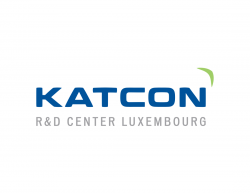
Synopsis: European standards have significantly evolved during the past three years in terms of pollutant detection and CO2 emissions. The future Euro 7 standard and CAFE (Corporate Average Fuel Emissions) until 2030 will be additional steps forward. Those changes will have major consequences not only on internal combustion engine development, but also on aftertreatment systems regardless of the engine (gasoline, diesel or hybrid). This presentation discusses current and future developments in exhaust systems to meet the European standards.
Arjen de Jong
CTO
Econamiq
NETHERLANDS

Synopsis: Conventional four-stroke engines are limited in expansion and therefore have significant thermal losses. Using today’s cylinder deactivation technology it is possible to dynamically switch between four-stroke operation and combined-cycle over-expansion with proven fuel efficiency and power gain up to 20%. Using existing engine architecture and layout implementation of such technology is cost-effective, especially for (P)HEV. The presentation will discuss a simulation study and engine test results with an outlook for the industry.

Gerald Feichtinger
head of fluid mechanics and test
Bitter GmbH
AUSTRIA
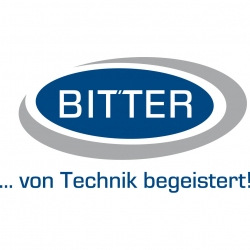
Synopsis: This presentation gives an overview of alternative drives and alternative fuels, including targets and the latest trends. It deals in detail with the required pump functions and media, and the required pump applications, and how they are solved with centrifugal and displacement pump types. Finally, the presentation will discuss some lightweight pump solutions.
Paul Freeland
principal engineer
Cosworth Limited
UK

Synopsis: Electrification offers some strong advantages for many transport applications in reducing CO2 and localized polluting emissions, but falls a long way short of fulfilling all of society's requirements for social and business mobility. This presentation takes an independent, pragmatic approach to what is really required to achieve the targets laid out in the 2015 Paris Agreement, and looks at what can be achieved with technology as we know it to reduce greenhouse gas concentrations in the Earth's atmosphere and improve local air quality issues.
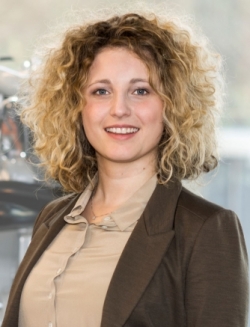
Barbara Graziano
project manager
FEV Europe GmbH
GERMANY
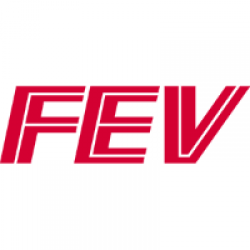
Synopsis: In 2018 the ICCT indicated that the transportation sector was responsible for 32% of the total CO2 emission in the EU. HD vehicles contributed significantly. In this session, the combustion characterization of a paraffinic biofuel (via Fischer-Tropsch synthesis) and 1-octanol (via Power-to-X) are presented. An ignition delay analyzer, a high-pressure chamber and an HD single-cylinder engine were used to assess the fuels’ impact on combustion and emissions. CAE-Support was adopted to investigate the additional benefits of a tailored combustion system. Thanks to the fuels' paraffinic and oxygenated content, reduced soot at same NOx was observed. Generally, increased indicated efficiency was observed.

Zakaria Haddad
engine functional design engineer
HTi Automotive for PSA
MOROCCO



Guillaume Hébert
senior manager R&D - clean powertrain thermal systems
Hanon Systems
CZECH REPUBLIC

Synopsis: Water injection in gasoline internal combustion engines is one of the technologies being investigated to improve thermal efficiency and reduce CO2 emissions. Mass deployment of such a solution is pending the availability of a reliable water source. Investigations have shown that exhaust gas condensates can solve this engineering problem. The feasibility of such a system has been physically demonstrated. A final correlated simulation model will enable the full potential of water injection to be unleashed when combined with an onboard water generation system.

Christoph Heinrich
professor
University of Applied Sciences Trier
GERMANY

Synopsis: Water injection into internal combustion engines has long been known as a powerful tool to increase maximum power and decrease emissions. Due to tighter emissions legislation, it might become a key feature of future gasoline engines. This talk will focus on different approaches to bring the water in, such as low-pressure injection into the air induction, direct water injection by an additional injector, or direct injection in the form of fuel-water emulsions. The conclusions will be based on our own lab testing results.
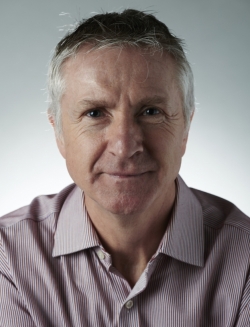
Keith Howard
strategic technology manager
Lubrizol
UK
Synopsis: This presentation covers an investigation done by Corning and Lubrizol focused on GPF and lubricant technology effects on ultrafine particulate emissions. Testing was performed using a mid-size TGDI vehicle tested over the appropriate WLTP cycle at a certified test laboratory in Germany. Engine-out and tailpipe emissions were measured, including particulate emissions by condensation particle counter and Cambustion DMS 500 instruments. Three types of filter were used, including a prototype next-generation unit. Two oils were tested, one with low ash and volatility, one with high ash and volatility. The effects on particulates down to 5nm were investigated.

Can Kayacan
research associate commercial engines - simulation
RWTH Aachen University
GERMANY

Synopsis: The latest developments in additive manufacturing make this production technology attractive for the automotive industry. AM makes a borderline lightweight design achievable even for large components such as cylinder heads and crankcases. Within the scope of the presented work, these components are being designed for production using the laser powder bed fusion (LPBF) process, which offers new degrees of freedom; for example, complex water jackets are no longer restricted by the typical manufacturing constraints of casting core. To design a lightweight borderline cylinder head and crankcase for series production, the new challenges within the established simulation method should be addressed and the methodology adapted. A topology optimization based on the finite-element method can identify the areas where material can be eliminated or porous material used. Therefore, CAE plays a significant role in the overall development process of lightweight components with functional integrations. Only with the help of the newly developed and verified CAE methods can the full potential of the innovative lightweight concepts be realized.

Lucien Koopmans
professor
Chalmers University of Technology
SWEDEN

Synopsis: Many countries and OEMs are communicating a focus on electrification of the transport sector and a plan to ban vehicles that operate on diesel and gasoline. As a result, many young engineers and students think the internal combustion engine will disappear in the next couple of decades, and this is affecting their career choice. But, with a well-to-wheel approach, renewable fuels can be as good or even better than electricity from a CO2 perspective. Hence, work on sustainable engines with renewable fuels is essential in achieving sustainable mobility. Furthermore, renewable fuels are often easier to implement on new and existing powertrains. Some results of research projects on engine operation with renewable fuels, such as dual-fuel operation of a heavy-duty engine, will be presented.

Thomas Körfer
group vice president - diesel powertrains business unit
FEV Group
GERMANY

Synopsis: Improved environmentally friendly – especially low-GHG-emitting – powertrain systems are required for future personal mobility and transportation. Since the release of the new European CO2 targets – which set ambitious reduction requirements – multifaceted developments have been initiated to meet them. In addition, the short-term achievement of extremely challenging real-world pollutant emission standards requires that these emissions be reduced close to a near-zero level. Further optimization of the classical ICE fuel specifications and properties – as well as an increased level of tailored powertrain electrification – provides good potential to simultaneously achieve these parallel targets. In this presentation, the corresponding technical roadmaps for light-duty diesel engines toward future market demands with near-zero pollutant emission behavior and superior GHG emission performance are analyzed and presented for sustainable use in the future.

Anna Krajinska
emissions engineer
Transport & Environment
UK

Synopsis: This talk will focus on particle number and unregulated pollutant emissions from two Euro 6d-temp diesel vehicles, with a particular focus on emissions during DPF regeneration events. The current regulatory approach and the potential to better regulate DPF regeneration will also be explored.
David Kunkel
senior simulation engineer
IHI Charging Systems GmbH
GERMANY
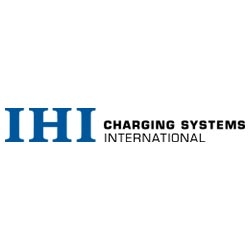
Synopsis: CNG is the solution for future CO2 challenges. CNG reduces CO2 emissions by 23% compared with gasoline engines. With the use of Bio-CNG or E-CNG it is possible to run a vehicle on 'real 0g CO2', while electric vehicles in Germany run with a power mix of about 500g/kWh. The author has been driving CNG vehicles since 2006 with a total of more than 300,000km. Vehicle price is about the same as gasoline vehicles. Fill up in three minutes at a current fuel cost of €3.42/100km. It is cheaper and more environmentally friendly than any e-vehicle of the same size.
Bruno Linsolas
regional vice president, Europe
Achates Power Inc
FRANCE

Synopsis: This presentation will highlight Achates Power’s work in achieving ultra-low emissions, high fuel efficiency, rapid warmup and catalyst light-off in the light-, medium- and heavy-duty engine segments using existing and future renewable fuels. The modern opposed-piston (OP) engine has the potential to deliver ultra-low-criteria pollutant emissions while simultaneously reducing fuel consumption by up to 30% compared with conventional engines. Manufacturers face the challenge of meeting future emissions and fuel economy standards in a cost-effective manner. Compliance with these regulations requires considerable financial investment in new technologies, all designed to increase fuel efficiency while decreasing emissions.



Carlo Locci
global application specialist: hydrogen fuel cells
Siemens Digital Industries Software
GERMANY

Synopsis: Hydrogen is seen as one of the main energy vectors of the future. Such technology still faces several challenges in terms of both production/storage and usage. In the automotive sector, hydrogen can be used in internal combustion engines and fuel cells. The two systems are extremely different in terms of efficiency and performance. In this presentation, the two technologies are discussed and analyzed from the numerical modeling perspective.

Marcus Lundgren
senior lecturer, division of combustion engines
Lund University
SWEDEN
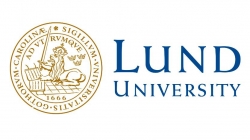
Synopsis: As we are facing CO2 regulations in the heavy truck industry, among other stringent legislation, future fuels and combustion processes are all under investigation. This work investigates the possibilities with natural gas as the main fuel, and eventually biogas (among other fuels). How do we burn it most efficiently? To answer this question we need advanced engine diagnostics and full engine testing as well as simulation tools.
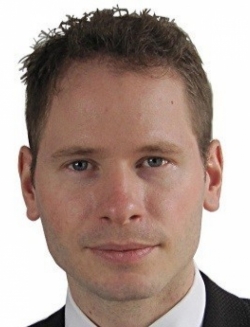
Steffen Mack
business development manager
Materion
GERMANY

Synopsis: The reduction of carbon emissions while maintaining power and performance in internal combustion engines is critical for reductions in global emissions of greenhouse gases. Although current engines have gone some way toward achieving lower emissions, savings are limited due to the materials used in engine components. This paper will outline some of the potential material alterations that enable significant emission savings while maintaining power by enabling the redesign of critical components. Results of engine testing on a commonly available engine will be presented, showing significant reductions in emissions.

Aman Mohd Ihsan Mamat
associate professor
Universiti Teknologi MARA
MALAYSIA

Synopsis: The thermal efficiency for internal combustion engines is less than 30%. Most of the energy is wasted to the environment via heat transfer and exhaust gas. Some of the wasted energy can be recovered in the exhaust pipe by using a bolt-on concept of electric turbocompounding. The electric turbocompounding consists of a turbine that is used as an exhaust expander, a shaft that is used to deliver the recovered power, and a high-speed electric generator. The presentation will focus on the design of the electric turbocompounding, prototype development that was used in 3D metal printing, and simulation and testing results.



Silvia Marelli
associate professor
department of mechanical, energy, management and transportation engineering (DIME), University of Genova
ITALY

Synopsis: TBC



Robert Morgan
professor of thermal propulsion systems, School of Computing, Engineering & Maths Advanced Engineering Centre
University of Brighton
UK

Synopsis: Despite sustained efforts for over two decades, air quality in many of our cities remains poor and global temperatures continue to rise. The internal combustion engine is seen by many as part of the problem but others worry the ‘dash to electrify’ will simply move the problem to somewhere else. The lack of consensus, failure of well-intended solutions and increasing hostility between stakeholders are more characteristic of the wicked problems encountered in the social sciences and business worlds than in science and engineering. Engineers are very good at answering questions and solving problems but only if they are asked the right question. In this paper, we will describe a holistic study of the transport and energy systems. The study led to a set of interesting questions from which a novel ‘combustion-focused’ approach was used to define a clean, efficient combustion system supplied by a sustainable source of energy.

Kai Morganti
project manager - transport
Saudi Aramco
SAUDI ARABIA
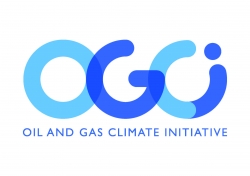
Synopsis: This presentation will discuss a variety of short- and medium-term pathways to decarbonize road, marine and aviation transport by combining low-carbon fuels with other efficiency-improving measures, such as engine/fuel co-optimization and hybridization. The presentation will address the key challenges and barriers facing the implementation of low-carbon fuels, including reformulated drop-in fuels compatible with existing engines and infrastructure, and alternative fuels that may require engine modifications. Finally, the technical maturity, scale-up potential and sustainability of key low-carbon fuel production pathways will be discussed, together with the potential impacts on the global transport energy system.

Wisdom Patrick Enang
design engineering lead
ExxonMobil
NIGERIA

Synopsis: TBC

Mark Peckham
director
Cambustion Ltd
UK

Synopsis: The improvements in emissions characteristics from a Euro 6d-TEMP passenger car diesel are compared with older vehicles with special regard to their transient NOx emissions. With future emissions legislation likely to include more scrutiny of NH3, this component is of particular concern and the dynamics of its emission with road conditions and exhaust temperature are discussed.

Andreas Rennet
CTO
Cardo Holding AG
GERMANY

Synopsis: Current discussions about the right technology for mobility are often based on a one-dimensional view. There is uncertainty about which concept will be the best in terms of sustainability, plus contradictory papers and information and a missing red line in the discussion of the future of mobility. Based on the activities in CO2 and resource footprint analysis, Cardo and world watchers have made an assessment of the different mobility solutions. One surprising result is that internal combustion engines can be sustainable and thus will have a place in future mobility scenarios.
Peter Richards
vice president
Protolabs
UK

Synopsis: The presentation will share the findings from a survey of over 300 senior executives from across the automotive sector on their views about innovation within the European automotive industry. It will explore the adoption of new fuel sources for transmission, where the innovation hot spots are across Europe and how the sector can evolve to meet the changing landscape in automotive.

Phil Roberts
principal engineer
Horiba MIRA Ltd
UK

Synopsis: To ensure complete RDE compliance, a frontloading approach to vehicle and powertrain development will be adopted by OEMs. Therefore, a road-to-rig (R2R) program called RDE+ has been developed by Horiba to allow OEMs to explore all permutations of the RDE moderate and extended boundary conditions. Utilizing road, chassis dyno, EiL and virtual tools, OEMs can deploy real-world scenarios with full environmental emulation in the conceptual stage of a vehicle and powertrain program. This reduces the number prototype vehicles and climatic tests required to ensure complete RDE compliance, as well as mitigating increased costs and timescales.

Humberto Rodrigues
head of engineering
Stratio Automotive
PORTUGAL

Synopsis: Given the increasing volumes of data being remotely acquired from vehicles, new opportunities are arising. However, new methods for analysis are required as well. Today's engineers use software tools to navigate through the data and search for anomalies and faults. But automation is required at scale, otherwise data and human resources will need to grow linearly together, which is not feasible because engineering resources are not infinite, unlike growth in data volumes. This presentation introduces how automation can be applied in the field of anomaly and fault detection, exploring a real use case that resulted in a patent application.



Luciano Rolando
assistant professor
Politecnico di Torino | Energy Department (DENERG)
ITALY

Synopsis: Nowadays the combined use of downsizing and turbocharging is considerably improving the efficiency of spark-ignition engines, thus closing the gap with diesel engines. Nevertheless, the 37.5% reduction in CO2 emissions in the transport sector, requested by the EU for the next decade, implies the development of innovative solutions to produce an additional step forward in the fuel economy of the next generation of spark-ignition engines. In such a framework, this presentation will provide a comprehensive overview of the most promising technologies currently being investigated by car manufacturers to comply with future GHG emissions targets. Particular attention will be devoted to the analysis of knock-mitigation techniques and advanced combustion processes, which can enable the achievement of engine thermodynamic efficiency close to 50%.
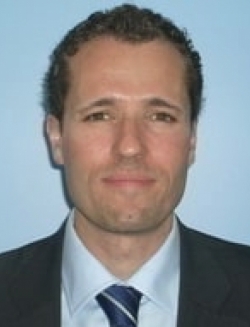


Cedric Rouaud
global technical expert and project director – thermal systems
Ricardo
UK

Synopsis: The role of thermal management in helping to reduce pollutants and CO2 emissions has increased in the last 10 years. Developments in the coolant and lubrication circuit of good cost/benefit ratio technologies have been made in hardware and also the control domain. The next step is to focus on a synergistic approach with the rest of the electrified powertrain and vehicle, taking into account cooling and heating requirements. The first part of the presentation will highlight the ICE thermal management roadmap and the tools (1D, 3D thermo-hydraulic steady-state and transient analysis) used to develop such technologies. The second part will showcase studies of waste heat recovery systems developed on passenger cars and commercial vehicles, which are not yet installed on current vehicles. The synergy approach with new engine technologies and electric components including waste heat recovery can be maximized on hybrid electric vehicles.
Hans-Josef Schiffgens
business development executive
Tula Technology
GERMANY

Synopsis: Reductions in CO2 and NOx emissions present conflicting challenges for diesel engines as worldwide standards continue to become more stringent. Dynamic Skip Fire (DSF), in production on SI V8 engines, has potential in diesel vehicles as dDSF to provide benefits in reducing CO2 and NOx simultaneously. DSF is an advanced cylinder deactivation technology that enables any number of cylinders to be dynamically selected to operate on an event-by-event basis. NVH is proactively mitigated by manipulating the firing sequence and cylinder loading to avoid vehicle resonances. The NOx reduction is mainly achieved by optimized exhaust temperature control.

Peter Kelly Senecal
owner and vice president
Convergent Science
USA

Synopsis: Transportation today is almost exclusively powered by the internal combustion engine (ICE). Although engines have become considerably cleaner and more efficient over the last few decades, human health and environmental concerns have led several governments around the world to propose bans on diesel and gasoline cars. The electrification of transportation, while often touted as the only way to mitigate vehicle emissions, comes with its own set of concerns and challenges that must be considered when developing future transportation technologies. Furthermore, there is still significant untapped potential in ICE concepts and the fuels they use. This presentation argues that hybrid systems are the fastest way to reduce CO2 emissions from vehicles and that, when judged on a lifecycle basis, the vehicle technology with the least environmental and health impact is highly region dependent. Therefore, a mixture of transportation technologies is necessary in the future fleet.

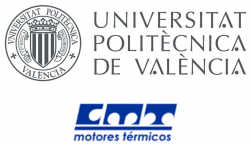

José Ramón Serrano
mechanical engineer
CMT-Motores Térmicos, Universitat Politècnica de València
SPAIN

Synopsis: The presentation discusses the concept of an ICE with a first Brayton cycle comprising a mixed ionic-electronic conducting (MIEC) ceramic-based membrane that separates the O2 from the air so that the suction comburent stream is free of N2; a second Brayton cycle is binarily combined with the first Brayton cycle and chained with an Otto (or diesel) cycle operating with oxy-combustion. The second Brayton cycle transmits mechanical energy as well as thermal energy from exhaust gases to the first Brayton cycle. The first Brayton cycle provides to the second O2 compressed from the MIEC membrane. By means of this engine, the emission of NOx into the atmosphere is avoided by the separation of N2 in the MIEC membrane. The oxy-fuel combustion facilitates the sequestration and liquefaction of CO2 through compression from the reciprocating engine’s own cylinders.

Michael Southcott
senior technical research analyst
IHS Markit
UK

Synopsis: In this presentation, IHS Markit will outline powertrain demand to 2028, presenting the global production outlook for all forms of light passenger vehicles. We will explain our perspective on what Euro 7 is likely to entail, then look at the uptake of technologies globally to meet these emissions standards, in particular looking at demand for them in Europe. Technologies include electrically heated catalysts, cooled exhaust gas recirculation, gasoline direct injection and supplementary exhaust aftertreatment. Reflecting on the forecast growth in electrification, an assessment will be given of demand for components that support hybridization of the powertrain.

Toby Stein
European automotive industry liaison
Infineum UK Ltd
UK

Synopsis: TBC
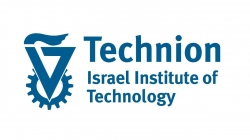
Leonid Tartakovsky
director, Internal Combustion Engines Laboratory, Faculty of Mechanical Engineering
Technion – Israel Institute of Technology
ISRAEL

Synopsis: A new high-pressure thermochemical recuperation (HP-TCR) was developed in the Technion that enables a dramatic improvement in energy efficiency and emissions reduction to zero-impact levels without any need for exhaust gas aftertreatment. This is due to burning the produced onboard hydrogen-rich reformate, while waste heat utilization provides an additional boost of energy efficiency. Methanol and dimethyl ether are promising primary fuels, because they are excellent electro-fuels that can be produced through CO2 capturing and are reformed at low temperatures (250-300°C), enabling efficient waste heat recovery. The HP-TCR concept can be integrated with low-temperature combustion to realize the reforming-controlled compression ignition process with subsequent additional benefits in terms of efficiency and emissions.
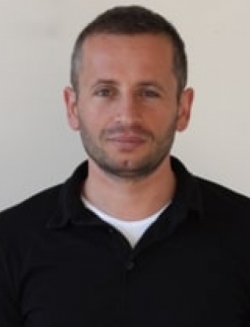
Athanasios Tsolakis
professor
University of Birmingham
UK

Synopsis: Utilizing sustainable low/zero-carbon energy carriers such as biofuels, e-fuels and ammonia offers a great opportunity for decarbonizing modern internal combustion engines. However, it is of paramount importance to develop clean, energy-efficient technologies for extending the decarbonization toward ultra-low or even 'zero' emissions. Exhaust fuel reforming utilizes waste heat and chemical compounds of the exhaust to generate reformate gas, containing hydrogen, with a higher heating value than that of the fuel it consumes. This presentation focuses on the synergies between low/zero-carbon fuel reforming and the application of advanced exhaust aftertreatment systems for improving vehicle fuel economy and decreasing total emissions.

Cornelius Wagner
engineer
FKFS
GERMANY

Synopsis: Synthetic fuels are being developed. To better assess the effects of the new fuels on the engine process, simulation models are being developed that reproduce the chemical and physical properties of these fuels. This paper examines DMC+ fuel. It is shown that the simulative conversion of a state-of-the-art gasoline engine to DMC+ fuel offers advantages in terms of efficiency at many operating points even if the engine design is not altered. In addition, a tailor-made engine concept is presented.

Carsten Weber
research and advanced engineering manager
Ford
GERMANY

Synopsis: The internal combustion engine has dominated the road transportation sector for the last century. This highly successful thermal machine has been heavily criticized recently. Based on the fundamental laws of thermodynamics, the undiminished increase of the total engine efficiency is limited. This moves 'what to burn' instead of 'how to burn' into the center of interest. A very promising alternative to classic fuels based on fossil sources is the use of sustainable fuels produced on the basis of renewable energy. The majority of the next-generation propulsion systems will continue to have an internal combustion engine as an integral part of an electrified system to ensure the best compromise regarding performance, operating range, cleanliness and cost. Therefore, the ongoing optimization of the internal combustion engine is essential for the future of automotive propulsion systems.
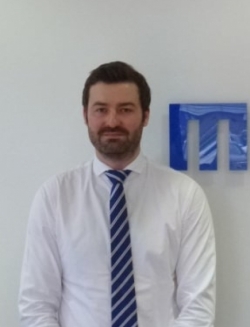
Simon Williams
Real Driving Emissions operations leader
Mahle Powertrain Ltd
UK
Synopsis: The presentation will provide an overview of the key challenges that EU7 will present for OEMs. It will also outline the latest development techniques to enable robust emissions (gaseous and particulate) optimization used at Mahle Powertrain.
Christian Wimmer
R&D manager
W. L. Gore & Associates GmbH
GERMANY
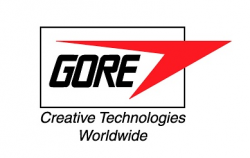
Synopsis: This talk introduces a new material based on expanded PTFE and graphite that can be applied to elastomer parts without adhesive. It gives such composites a permanent low-friction, abrasion-resistant surface that remains elastic. Discussed applications include shaft seals (e.g. crankshafts) and valve seals (e.g. in cooling or air-conditioning compressors). The new material can help to reduce power/torque loss, increase reliability and thus contribute to CO2 reduction and efficiency gains.

Joseph Woodburn
research scientist
Bosmal
POLAND

Synopsis: Stringent targets to reduce CO2/FC in the road transport sector are demanding challenges in their own right, but they are accompanied by simultaneous demands for low real-world emissions. The much-discussed post-Euro 6/VI standards will increase the stringency of emissions requirements, while maintaining or even strengthening current requirements that emissions limits be respected under actual conditions of use. These twin challenges are subject to trade-offs such as the PM-NOx, CO2-NOx and general fuel-emissions trade-offs. Together, such effects exert conflicting demands on engines, aftertreatment and their calibration, as well as on other vehicle parameters such as weight.



Boris Zhmud
CTO / head of R&D
Applied Nano Surfaces Sweden AB / Bizol Germany GmbH
SWEDEN

Synopsis: Increasing pressure to reduce CO2 emissions on one side, and the lack of infrastructure to support battery electric vehicles on the other, make hybrid cars an attractive option for customers. The internal combustion engine in a hybrid powertrain can be programmed to operate close to its 'sweet spot' most of the time to achieve its maximum thermodynamic efficiency. The torque fill of hybrids allows one to combine strong driving performance with very good fuel economy. The regenerative braking also helps conserve energy. At the same time, hybrids pose some new requirements for lubricants, including motor and transmission oils.